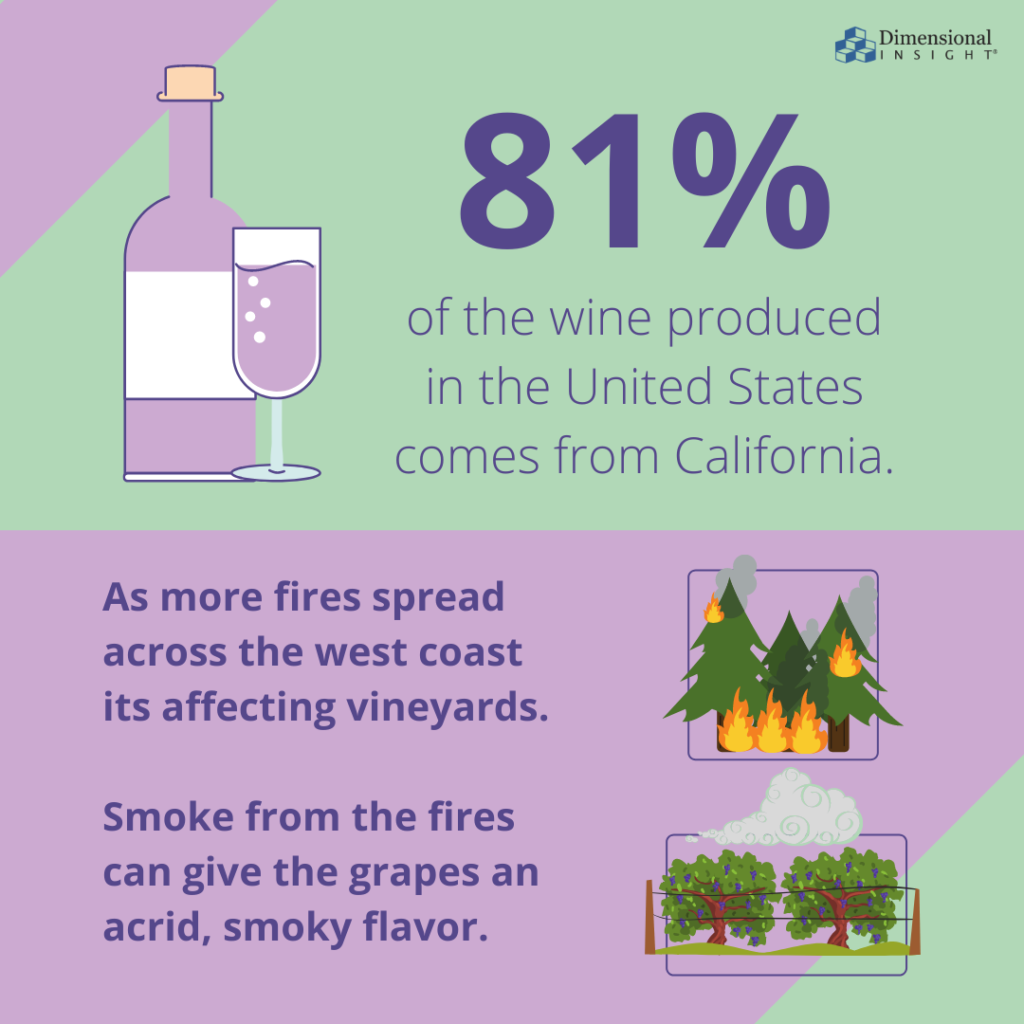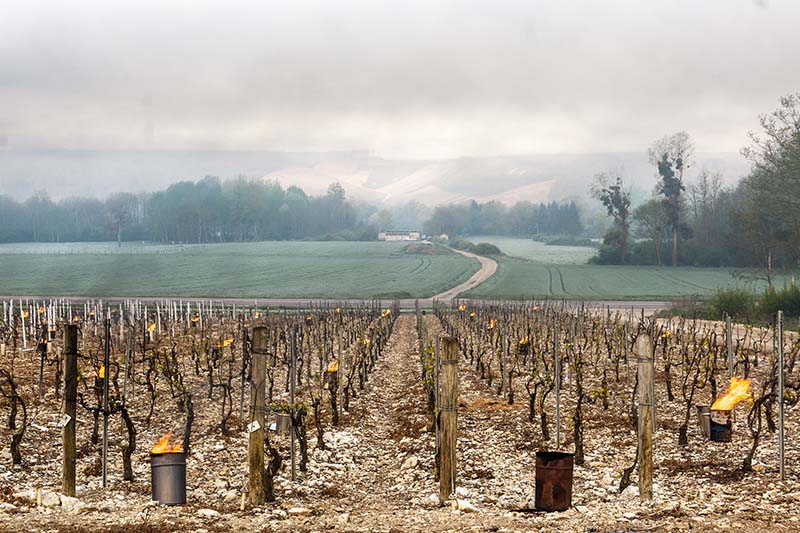Wildfires have been burning across the west coast of the United States for several weeks now. It seems like every time one blaze is quenched, a new one springs up elsewhere. These fires have tragically destroyed thousands of acres of forests and hundreds of homes, and are only now being successfully contained. Several businesses were severely hurt by the disaster as well, including California’s wine industry. In total, 81% of the wine produced in the United States comes from California, making it the fourth largest wine producer globally.
While the full extent of the damages is unknown, the data clearly indicates that fires like this one are becoming more and more frequent. How will these fires affect the wine industry in 2020 and beyond, and what can be done to help?
Fire damage to vineyards
The Napa and Sonoma Valleys, two of the most famous areas for wine production in California, are both being affected by the LNU Complex fire, which is the third largest in the state’s history. The popular Chateau Boswell Winery was destroyed in this fire over the weekend.
While fires do occasionally burn entire vineyards, simply being near the blaze is often enough to destroy a crop of grapes. Too much exposure to the smoke can give the grapes an acrid, smoky flavor. Luckily, this kind of smoke damage usually only occurs when the fire is in close proximity to the grapes, and not from the ambient smoke that has been lingering in the air over much of the west coast. A statement by the California Wine Institute reads, “Multiple considerations determine the potential impacts of smoke exposure including proximity of smoke to the grapes (vs. smoke being in the upper atmosphere), freshness, density and duration of the smoke, wind direction and stage of development and variety of the grapes. Air quality in wine communities, which is usually late-stage smoke from remote fires, does not directly correlate to impacts on grapes.” Still, some wineries are refusing shipments of grapes from affected areas until more test are done.
It is hard to tell at this point how much of an effect this smoke taint would have on the wine industry, or on the prices of individual bottles. Since the wine often requires years of aging after the grapes are pressed in order to be ready for sale, the long-term impact is difficult to predict.

Fires are becoming more frequent
Devastating forest fires on the west coast are certainly becoming more and more frequent as time goes by, but the pattern isn’t always neat and predictable. By any measurement, the 2020 fire season has been an outlier. According to data published by the state of California, in 2017 there were 505,956 acres burned by forest fires. In 2018 that number rose to 876,147. 2019 was a relatively calm year, with only 135,573 acres of damage. But this year has seen more destruction than the previous three combined, with 2,275,559 acres of damage (and it’s still early autumn).
As average global temperatures continue to rise, it is becoming increasingly clear how big of a role climate change is playing in these fires. According to the Union of Concerned Scientists, “warming temperatures and drying soils—both tied to human-caused climate change—have contributed to observed increases in wildfire activity. The earlier snowmelt and higher temperatures—and resulting drier soils from increased evaporation—in addition to greater water loss from vegetation have contributed to lengthening the Western fire seasons. Leaders at CalFire even suggest there’s not a wildfire ‘season’ at all anymore, as California in recent years has been battling blazes year-round.”
The warm, dry climate that makes California an ideal place for vineyards is also putting those vineyards at risk. Other factors, like the lack of widespread fires last year, are contributing to this year’s blazes as well. The spread of homes and businesses into more wildfire-prone areas also raises the risk of fires starting, and also the risk of more property damage. But examining the data of overall nationwide fire damages and expenses published by the National Interagency Fire Center clearly shows that fires are getting worse, even though more and more money is being spent to fight them. This points to a larger problem.
Conclusion
So what does this mean for the future of California’s wine industry? At this point, nothing is certain. But if wildfires continue to grow worse at the same rate that they are now, there could be serious long-term consequences for the state’s wine industry as a whole. Perhaps over time vineyards will start to migrate farther inland, or perhaps we will start to see wineries in other states like New York, Texas, and Michigan start to grow in prominence.
Unfortunately, there is no clear solution here. Buying bottles of California or Oregon-produced wine is one way for individual consumers to help out the struggling wineries in these hard times, but that doesn’t fix the underlying problem. If climate change is going to be as bad as scientists are predicting, the long-term impact on California’s wine industry, and the economy as a whole, will be dire.
- The CBMTA is Here to Stay! Here’s Why That’s Good for Craft Brewers - January 6, 2021
- High-End Liquor Sales are Recovering Slowly - November 10, 2020
- How to Reach New Customers in 2021 - November 5, 2020




